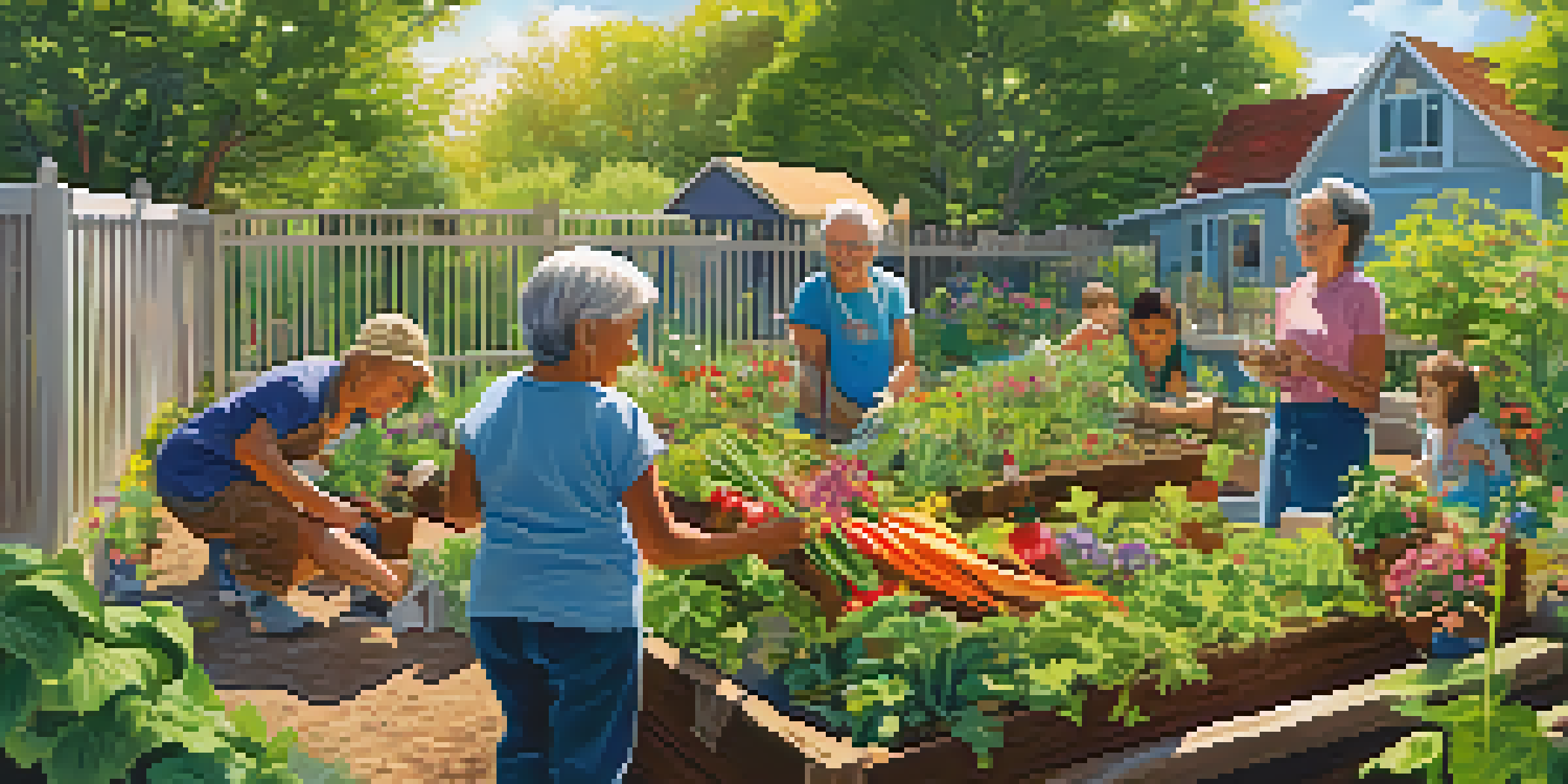Engaging Seniors and Youth: Intergenerational Program Models

Understanding the Importance of Intergenerational Programs
Intergenerational programs are initiatives designed to bring together different age groups, particularly seniors and youth. These programs aim to foster relationships, break down age-related stereotypes, and enhance the well-being of all participants. By encouraging collaboration and communication, these initiatives create a sense of community and belonging.
We are all different, but we share the same human spirit. Perhaps it's human nature that we adapt and survive.
The importance of these programs cannot be overstated. They offer seniors opportunities to share their wisdom and life experiences, while youth benefit from mentorship and guidance. This exchange enriches both groups, promoting mutual respect and understanding across generations.
Moreover, as society grapples with issues like loneliness and social isolation, intergenerational programs serve as a remedy. By creating spaces where young and older individuals can interact, these initiatives help combat feelings of loneliness, particularly among seniors, while providing youth with a stronger sense of purpose and connection.
Common Models of Intergenerational Programs
There are several effective models for intergenerational programs, each with unique approaches to engagement. One popular model is the mentorship program, where seniors guide youth in various skills, from arts and crafts to life lessons. This model not only benefits the youth but often revitalizes seniors' sense of purpose as they take on the role of mentors.

Another effective model is the shared activities approach, where both age groups come together for communal activities such as gardening, cooking, or sports. These shared experiences foster teamwork and encourage friendships to blossom. The joy of collaborating on a project can bridge the generational gap and create lasting bonds.
Intergenerational programs unite ages
These initiatives foster connections between seniors and youth, enhancing community and breaking down stereotypes.
Lastly, technology-focused programs are gaining traction. In these models, younger individuals teach seniors how to navigate digital tools, from smartphones to social media. This not only empowers seniors but also helps youth develop patience and communication skills as they teach others, creating a win-win scenario.
Benefits for Seniors in Intergenerational Programs
Seniors involved in intergenerational programs often experience a boost in their mental and emotional health. Engaging with younger individuals can reignite their sense of purpose and reduce feelings of isolation. When seniors share their stories and knowledge, they gain appreciation and validation, which can significantly uplift their spirits.
The greatest gift of life is friendship, and I have received it.
Furthermore, these interactions help seniors stay physically active, especially in programs involving hands-on activities. Whether it's dancing, gardening, or even playing games, moving around with youth encourages a healthier lifestyle. Staying active contributes to better health outcomes and enhances overall quality of life.
Additionally, intergenerational programs can help seniors combat cognitive decline. Engaging in conversations and activities with youth stimulates the mind, promoting memory retention and cognitive function. This mental engagement can be critical for maintaining sharpness and clarity as they age.
Advantages for Youth in Intergenerational Programs
Youth participating in intergenerational programs gain invaluable life skills that can shape their future. Through mentorship from seniors, they can learn essential values such as patience, respect, and empathy. These qualities are not only vital for personal growth but also contribute to better social interactions in their daily lives.
Additionally, these programs provide a unique opportunity for youth to learn about history and culture from firsthand accounts. Engaging with seniors allows young people to connect with the past and understand how it shapes their present. This knowledge fosters a sense of identity and can inspire them to become more active, informed citizens.
Benefits for all participants
Both seniors and youth experience personal growth, improved mental health, and valuable life skills through shared experiences.
Lastly, intergenerational programs can enhance youth's communication skills. Interacting with older individuals often requires them to adapt their language and approach, improving their ability to convey thoughts and ideas. This skill is crucial not just in personal interactions but also in their future professional lives.
Creating Successful Intergenerational Programs
Building an effective intergenerational program starts with understanding the needs and interests of both age groups. Engaging both seniors and youth in the planning process ensures that the programs are relevant and appealing. This collaborative approach lays a solid foundation for success and encourages commitment from all participants.
Flexibility and adaptability are key factors in program development. As preferences and societal dynamics change, it's essential to periodically assess and adjust the activities to maintain engagement. Keeping programs fresh and exciting helps sustain interest from both seniors and youth alike.
Finally, fostering a supportive environment is crucial. Creating a space where both generations feel safe and valued encourages open communication and deeper connections. This sense of belonging enhances the overall experience and strengthens the relationships formed through the program.
Challenges in Implementing Intergenerational Programs
While intergenerational programs offer numerous benefits, they are not without challenges. One significant hurdle is the potential for age-related stereotypes to hinder interactions. Overcoming preconceived notions about each age group requires intentional efforts, such as team-building activities that emphasize collaboration.
Another challenge is logistical considerations, including transportation and scheduling. Coordinating times that work for both seniors and youth can be tricky, especially when balancing school schedules with senior availability. Effective communication and flexibility are essential to overcoming these obstacles.
Future relies on adaptation and tech
Embracing technology and evolving community needs will be vital in sustaining and enhancing intergenerational programs.
Finally, securing funding and resources can pose a challenge for many programs. Developing partnerships with local businesses or community organizations can help alleviate this issue. By pooling resources, programs can thrive and continue to provide valuable experiences for participants.
The Future of Intergenerational Programs
As society continues to evolve, the potential for intergenerational programs is vast. With an increasing aging population and a growing focus on community well-being, these programs can play a pivotal role in bridging generational divides. They can transform community dynamics and enrich the lives of both seniors and youth.
Technology will also play a significant role in shaping the future of these programs. Virtual interactions and online platforms can expand reach, allowing seniors and youth to connect regardless of geographical barriers. This digital shift can enhance accessibility and inclusivity within intergenerational initiatives.

Ultimately, fostering intergenerational relationships is essential for creating a more cohesive society. As we move forward, it's crucial to prioritize the implementation and support of these programs, ensuring that all generations can learn from and uplift one another.